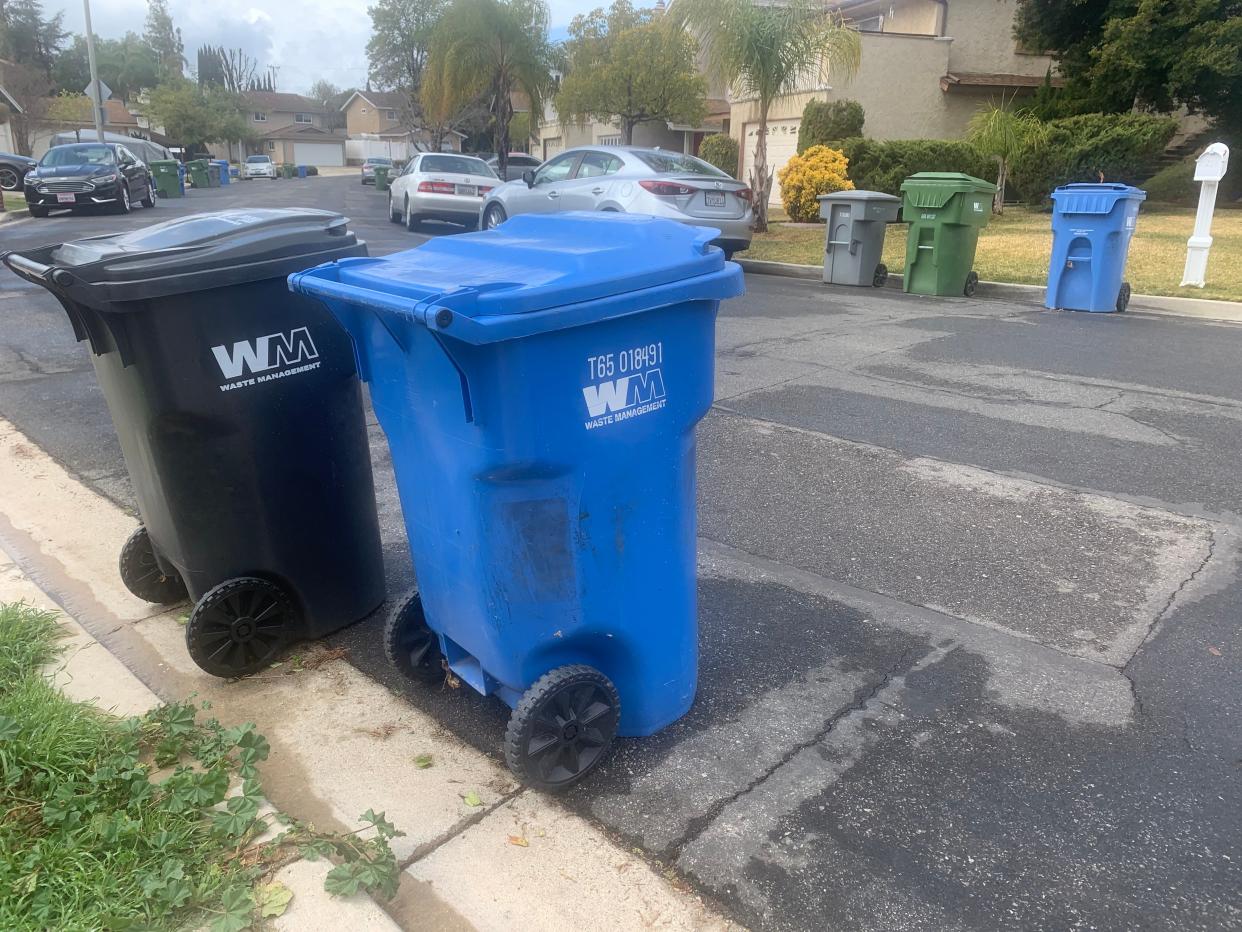Eco-tip: Colors communicate better than words

“California government is regulating the color of my trash cans; in times like the present, we should really focus on trash can colors.”
That was a sarcastic posting on a neighborhood-based social media platform in Ventura recently.
The truth is, there is a good reason to standardize trash and recycling colors. Sometimes colors communicate better than words.
When blue represents recycling all over the state, it will improve recycling. Fewer people will accidentally contaminate recycling carts with garbage. Similarly, green will represent organics: yard clippings and food scraps. Black or grey will be used for trash. Rare commercial containers for food only, with no yard clippings, will be brown.
The new rules come from Senate Bill 1383, enacted in 2016, which focuses on preventing disposal of materials that can generate methane gas while rotting in landfills.
The transition doesn't have to be complete until existing containers —even if they're the "wrong" color — reach the end of their useful lives, up to 2036. Also, outdated carts can be reused in some cases if the container has a correctly colored lid. Finally, all contracted refuse and recycling collectors in Ventura County bale and recycle old containers.
Additionally, Harrison saves outdated green carts, previously used for garbage, so the containers can be reused for organic discards. The containers are smaller than the standard used for organics, so they are provided when requested by residents with little yard waste or limited ability to push large carts. Harrison has already transitioned carts in some residential neighborhoods of Ventura, Camarillo, Fillmore and Ojai, and the company is changing bin colors at commercial accounts as those require replacement.
Oxnard’s residential carts were already compliant with color codes prior to the new regulations, but current commercial recycling containers are white and commercial trash containers are brown. The city is gradually collecting and repainting old containers, simultaneously implementing a program of welding repairs.
Both residential and commercial carts are already color compliant in Santa Paula and Thousand Oaks, the two local cities served by Athens Services, according to Rondi Guthrie, vice president of government affairs.
Jennifer Andrews, area communications manager for WM of Southern California — formerly Waste Management — reports all Ventura County residents served by the company will receive color-compliant trash and recycling carts over the next two years. Organics carts are already compliant in most cases. For organics, WM generally uses grey carts with green lids, replacing outdated containers at the end of their useful life.
While colors communicate each container's basic purpose, the tough work of public education remains to explain what goes in each one.
“Styrofoam in the recycling is always a problem for both residential and commercial,” said Sarah Ahern, outreach and education specialist for Oxnard's Public Works Department. Some people think foam is recyclable, but it is “actually just a hard-to-handle nuisance” for workers at Oxnard’s Del Norte sorting center, according to Ahern.
Also, too much cardboard is still going into commercial trash, Ahern said. Boxes that haven't been collapsed fill recycling bins prematurely, sometimes pushing additional recyclables into the trash. Getting workers to collapse boxes helps. But in some cases, she said, businesses simply need to increase their recycling service levels.
Reminding people to include bagged food scraps with yard clippings in residential organics carts is a top outreach priority for Harrison Industries, according to spokesperson Nan Drake. Bags are also used in areas served by WM and Oxnard. Athens allows bags but prefers no bags in their service areas.
Guthrie, the Athens spokesperson, is prioritizing a different bag problem.
Dog walkers sometimes diligently pick up their pet’s poop with a bag, but then deposit the bag in the nearest curbside cart. Dog poop should not be placed in organics carts. In the future, the color coding of the correct container, the trash cart, will match the poop. Maybe that will help.
David Goldstein, an environmental resource analyst with the Ventura County Public Works Agency, can be reached at 805-658-4312 or david.goldstein@ventura.org.
This article originally appeared on Ventura County Star: Eco-tip: Colors communicate better than words

